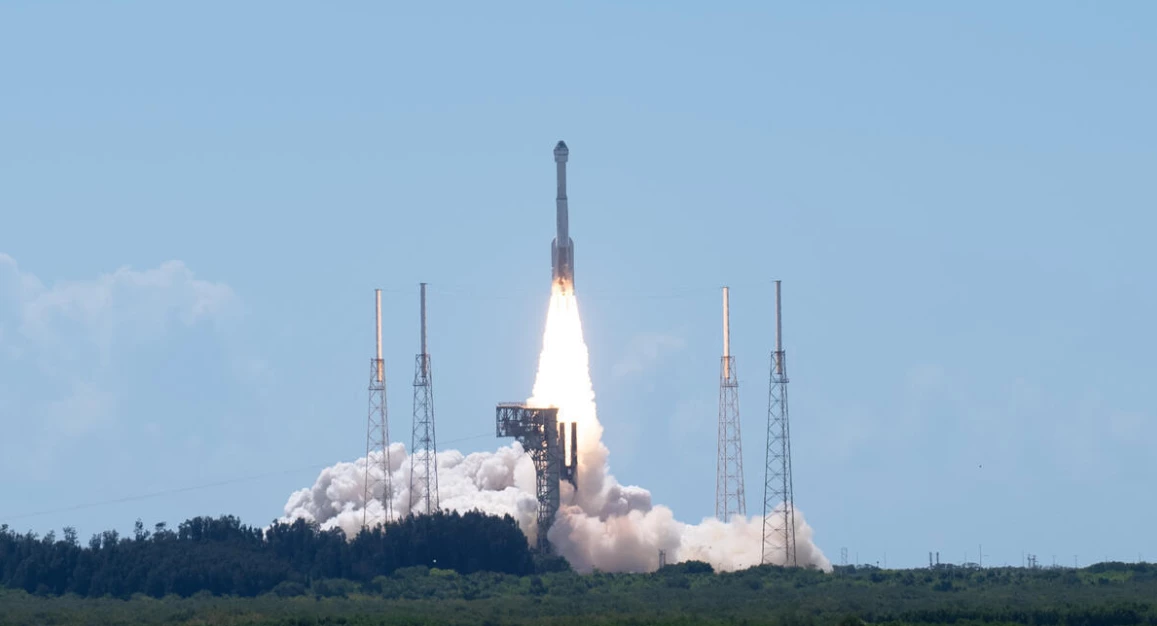It was umpteenth time lucky for Boeing today, as its Starliner spacecraft roared into orbit. At 10:52 am EDT, the capsule carrying astronauts Barry Wilmore and Sunita Williams lifted off from Cape Canaveral Space Force Station atop an Atlas V rocket.
After 14 years of cost overruns, delays, ongoing technical problems, an embarrassing first uncrewed flight and a string of last minute launch scrubs, Boeing's Starliner is finally on its way to the International Space Station (ISS) with its crew of two NASA astronauts aboard.
Under clear skies, the United Launch Alliance (ULA) Atlas V rocket lifted off from Space Launch Complex-41 (SLC-41) at Cape Canaveral Space Force Station in Florida during an "instant" launch window. The vehicle reached the state of maximum dynamic pressure six seconds into the flight and went supersonic just after the one-minute mark. The Atlas booster shut down at two minutes, 20 seconds into the flight followed by the Centaur second stage firing its engine 10 seconds after separation occurred at four minutes, 28 seconds.
About five minutes into the mission, the Centaur shut its engine down. About 11 minutes after liftoff, the Starliner separated from the second stage as it went into orbit at an altitude between 116 and 137 miles (187 and 222 km) and an inclination of 51.62º.
According to Boeing, the astronauts have removed their spacesuits and are conducting a series of flight tests. These include practicing using the stars to orient the craft in the event of an emergency, manually flying the capsule without autonomous control, and pointing the solar panels at the Sun to generate power.
Starliner is expected to dock with the space station tomorrow, when the crew will deliver 760 lb (345 kg) of supplies and spend a week aboard before returning to Earth. If the mission is successful, the next step will be certification of the spacecraft for long-duration missions.
"This crew flight test represents the beginning of a new era of space exploration as we watch astronauts Wilmore and Williams put Boeing's Starliner through its paces on the way to the International Space Station," said Boeing Defense, Space & Security President and CEO Ted Colbert. "This is a great start. We look forward to getting the astronauts safely to the space station and back home."
Source: Boeing





